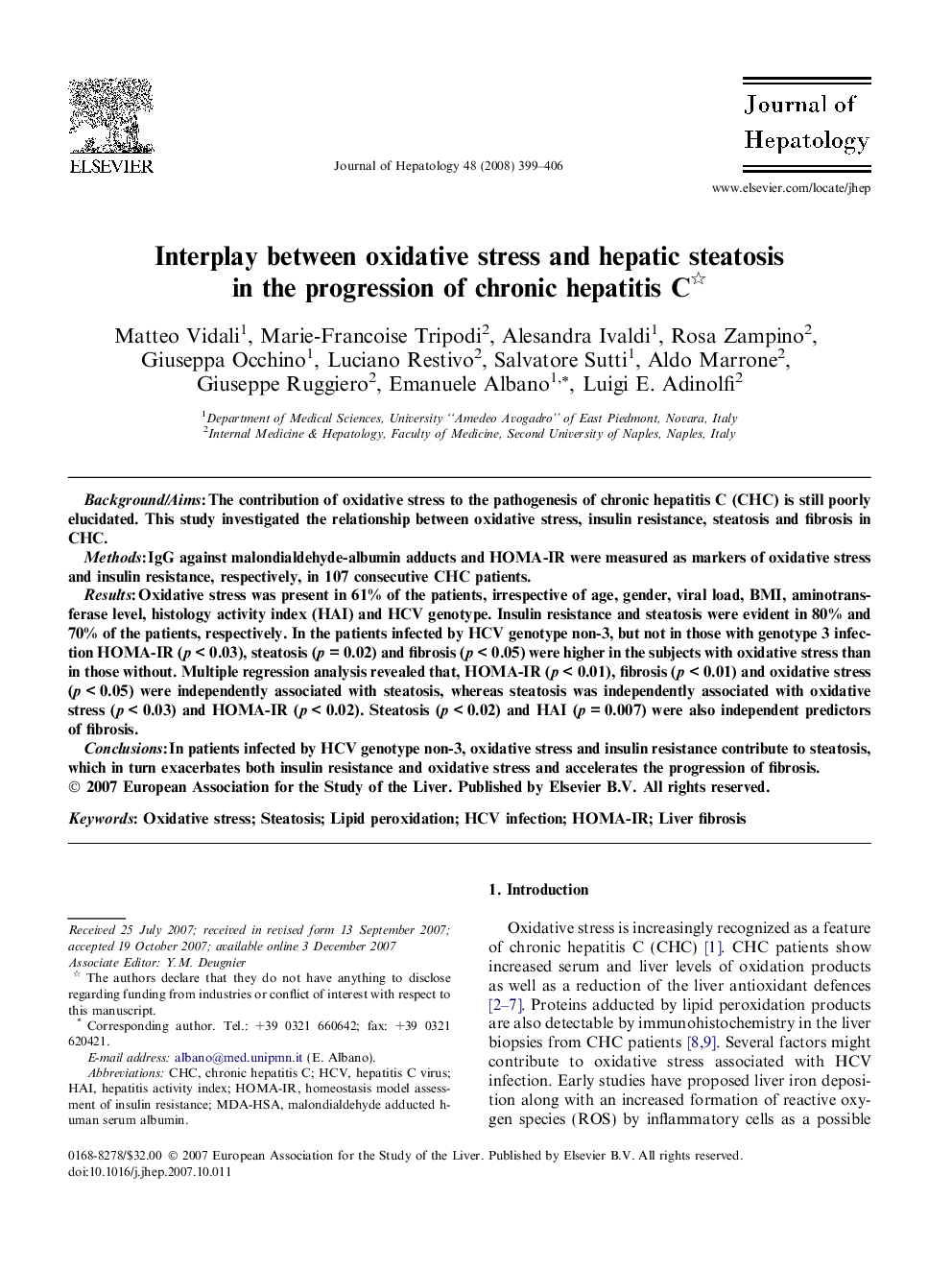| Article ID | Journal | Published Year | Pages | File Type |
|---|---|---|---|---|
| 3315203 | Journal of Hepatology | 2008 | 8 Pages |
Background/AimsThe contribution of oxidative stress to the pathogenesis of chronic hepatitis C (CHC) is still poorly elucidated. This study investigated the relationship between oxidative stress, insulin resistance, steatosis and fibrosis in CHC.MethodsIgG against malondialdehyde-albumin adducts and HOMA-IR were measured as markers of oxidative stress and insulin resistance, respectively, in 107 consecutive CHC patients.ResultsOxidative stress was present in 61% of the patients, irrespective of age, gender, viral load, BMI, aminotransferase level, histology activity index (HAI) and HCV genotype. Insulin resistance and steatosis were evident in 80% and 70% of the patients, respectively. In the patients infected by HCV genotype non-3, but not in those with genotype 3 infection HOMA-IR (p < 0.03), steatosis (p = 0.02) and fibrosis (p < 0.05) were higher in the subjects with oxidative stress than in those without. Multiple regression analysis revealed that, HOMA-IR (p < 0.01), fibrosis (p < 0.01) and oxidative stress (p < 0.05) were independently associated with steatosis, whereas steatosis was independently associated with oxidative stress (p < 0.03) and HOMA-IR (p < 0.02). Steatosis (p < 0.02) and HAI (p = 0.007) were also independent predictors of fibrosis.ConclusionsIn patients infected by HCV genotype non-3, oxidative stress and insulin resistance contribute to steatosis, which in turn exacerbates both insulin resistance and oxidative stress and accelerates the progression of fibrosis.
